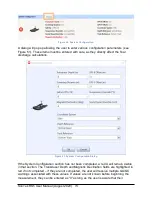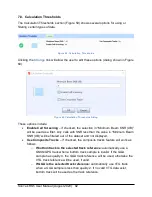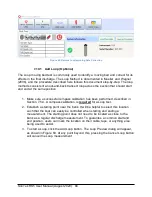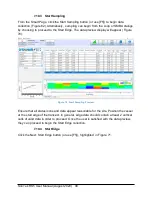
SonTek RS5 User Manual (August 2020) 75
The GPS antenna is often forced to be mounted off-center when using a manned boat.
The X and Y axis definitions are shown in Figure 53.
Figure 53. GPS X/Y Offset Axis Definition
7.5.5.4 Salinity
Salinity (PSS-78) generally refers to the concentration of the minerals dissolved in
water.
Typical values include:
0-0.5 (freshwater)
0.5-30 (brackish)
30-50 (saline water, typical for large inland seas and oceans, with average ocean
salinity at 35)
>50 (brine – not advised for ADP measurement)
Salinity affects the speed of sound in water; high salinity values increase the speed of
sound. Manual entry of an accurate salinity value enables correction of the speed of
sound in water which is required for the velocity calculation. Because speed of sound
corrections using the PSS-78 convention are only valid up to 42, a maximum salinity of
42 is allowed in the RSQ software. It is not recommended to collect ADP measurements
in brine water that has a higher salinity. Corrections are recommended in any aquatic
environment not considered freshwater. Reference values can be obtained from
published sources or determined in situ with an appropriate meter.
7.5.5.5 Temperature Override
Temperature affects the speed of sound in water in a similar way as salinity: an
increase in temperature increase the speed of sound. The RS5 is equipped with a
temperature sensor built into the transducer housing. The system is designed to
automatically calculate the velocity with the measured temperature. In the case where
the user wishes to use an external temperature measurement, the temperature can be
X (positive)
Y (positive)
Points to Beam 1
Beam 1
X (positive)
Y (positive)






























